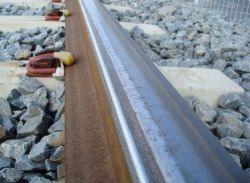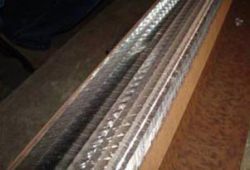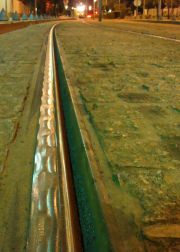Rail Grinding
...
New Rail Grinding
During the grinding of new rails, which should be performed before putting the rails into service or as soon as possible thereafter, the differences in the surface structure (low-carbon and high-carbon areas) caused by milling in the rail production process are eliminated by removing the upper surface-decarburized layer. As well as creating a homogeneous surface of the rail head, it is simultaneously possible to remove any existing damage to the running surface caused by site operations, to process joint weldings, to remove storage-related surface rust and deviations from the required target cross-profile of the rail head. Moreover, processing intervals are extended due to the fact that faults take longer to arise.
Preventive Grinding
During preventive grinding, rail faults such as head checks, corrugation and wave formation or excessive profile deviations are dealt with when they first start to appear. This is achieved by removing the hardened and brittle rail surface – a process that requires only relatively limited cutting depths and fewer running times. This considerably increases the safety and the service life of the rail, prevents noise emissions and inferior driving comfort, and at the same time reduces the costs per finished meter compared to corrective grinding.
Corrective Grinding
Corrective grinding is used to achieve the target values for worn or existing longitudinal and cross rail head profiles, to eliminate rail faults, such as laps or corrugations, and to produce special profiles.
To this end, the desired radiuses on the rail head are restored through the adjustment of the angularity of the individual grinding module axes and the associated production of grinding facets. The grinding facets thus produced are kept as narrow as possible in order to get as close as possible to the target profile.
Production of special profiles
For reasons of driving safety, avoidance of roll contact fatigue, and extreme stress, speed or wear situations, it can be important in some cases to use special rail profiles. Such grinding strategies are applied, for example, for anti-head-check processing, the production of asymmetrical rail profiles in areas with heavily used bends and for track corrections.




